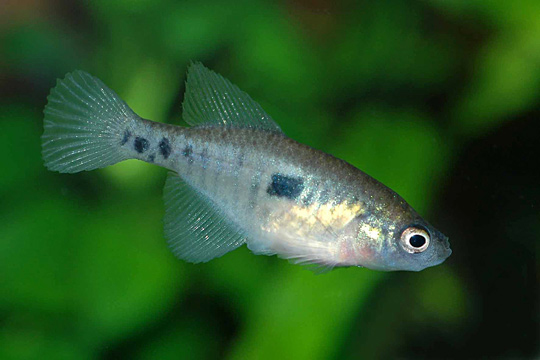| Rivulidae (Rivulines), subfamily: Cynolebiinae |
| 5.14 cm SL (male/unsexed); 5.56 cm SL (female) |
|
pelagic; freshwater |
| South America: São Francisco River basin, Brazil. |
|
Dorsal soft rays (total): 15-24; Anal soft rays: 20-25; Vertebrae: 28-30. Caudal peduncle of female with black spots. Male's anal fin with gray to black distal stripe; basihyal broad, 70-95% in length; and, second pharyngobranchial teeth, 5-10. Dorsal-fin rays 20-24 in male, 15-19 in female; anal-fin rays 21-25 in male, 20-24 in female; caudal-fin rays 23-25, caudal fin subtruncate in male, rounded in female. Long filamentous rays on tip of dorsal and anal-fin in male, tips reaching beyond posterior border of caudal fin. Anal fin reddish orange anteriorly, yellow posteriorly; body bars inconspicuous in life, poorly visible in preserved specimens (Ref. 49550). |
|
|
Endangered (EN); Date assessed: 18 May 2022 (B2ab(ii,iii)) Ref. (130435)
|
| harmless |
Source and more info: www.fishbase.org. For personal, classroom, and other internal use only. Not for publication.

